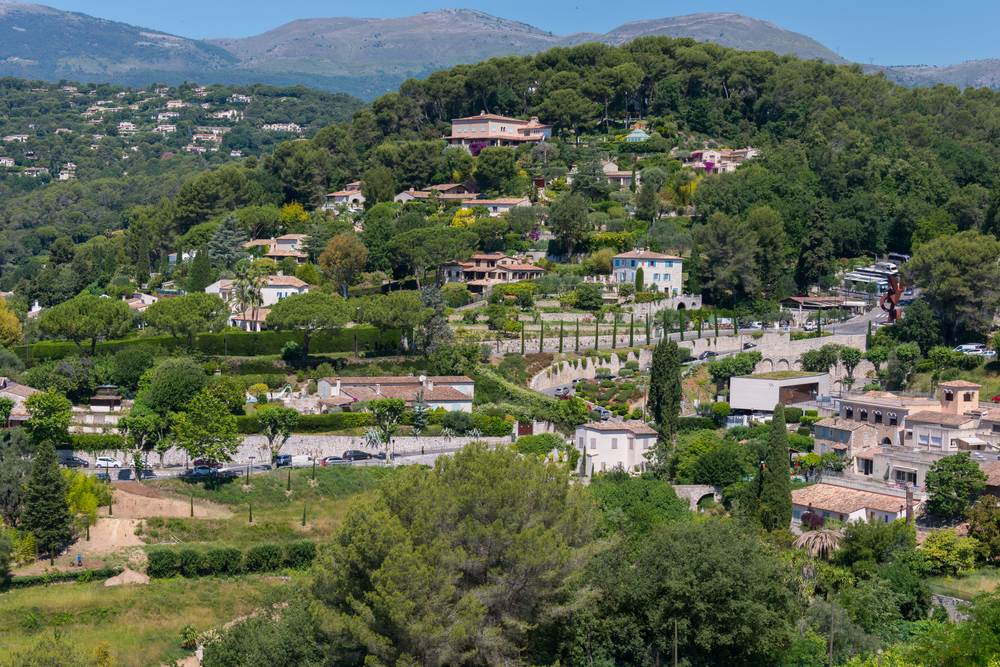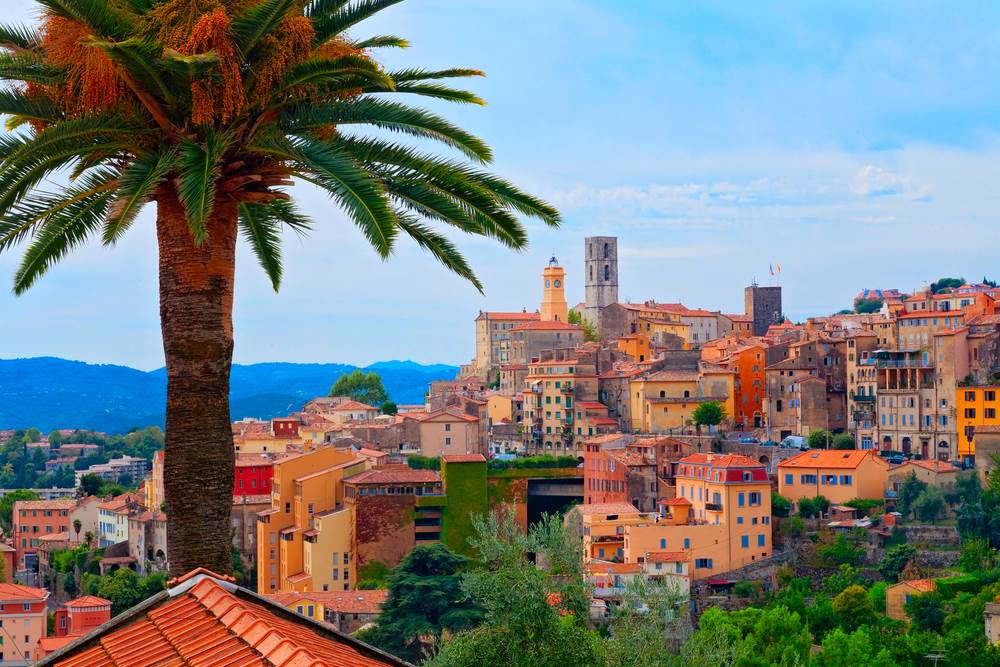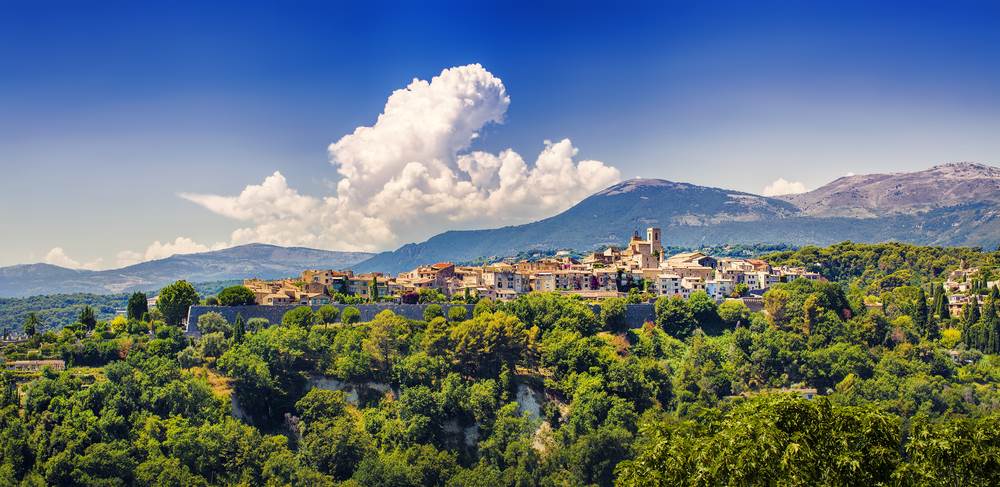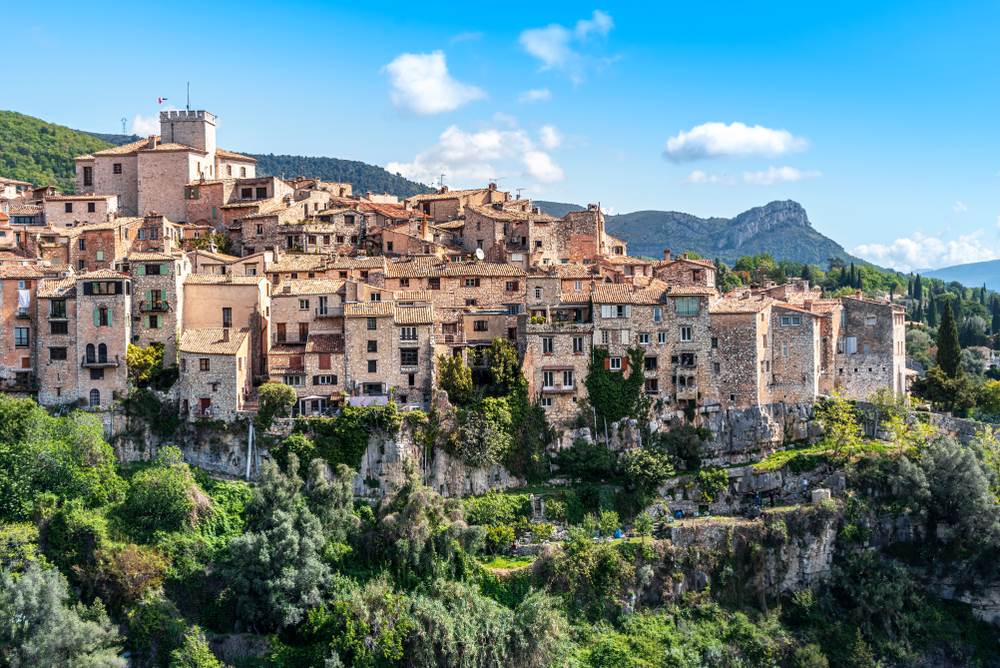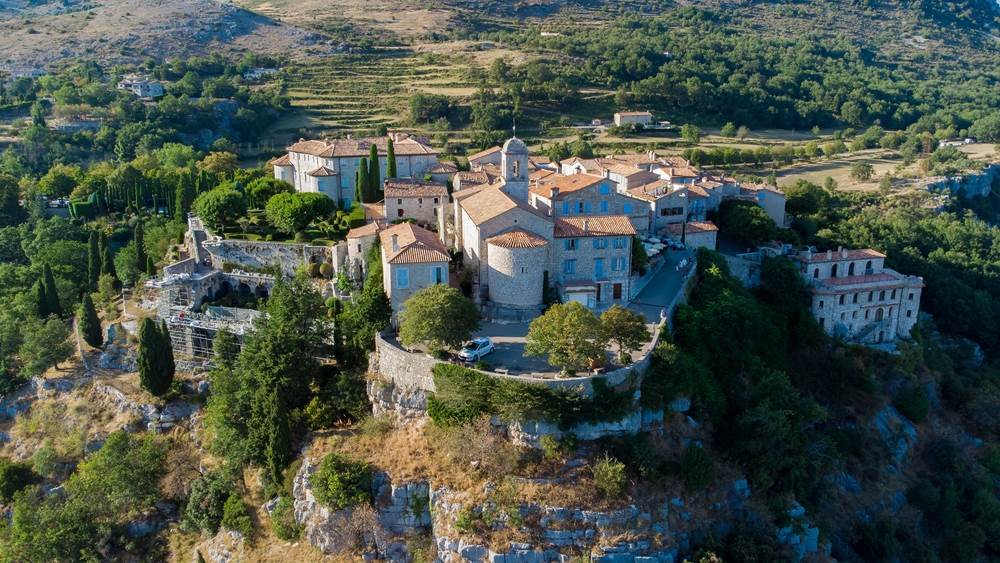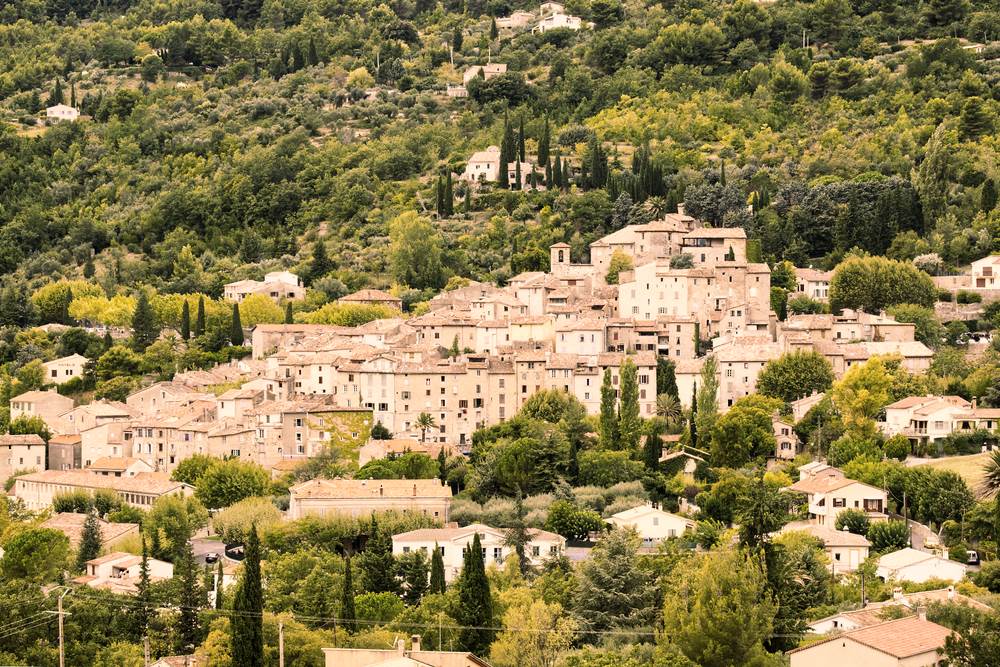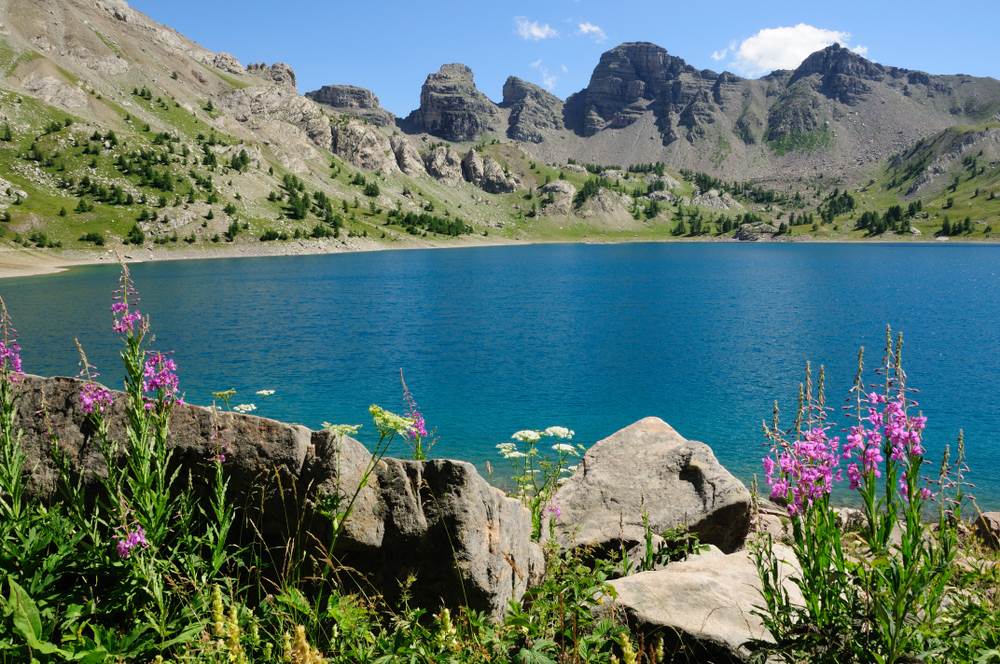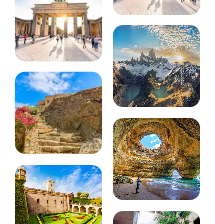What to see and do in the hinterland of Nice?
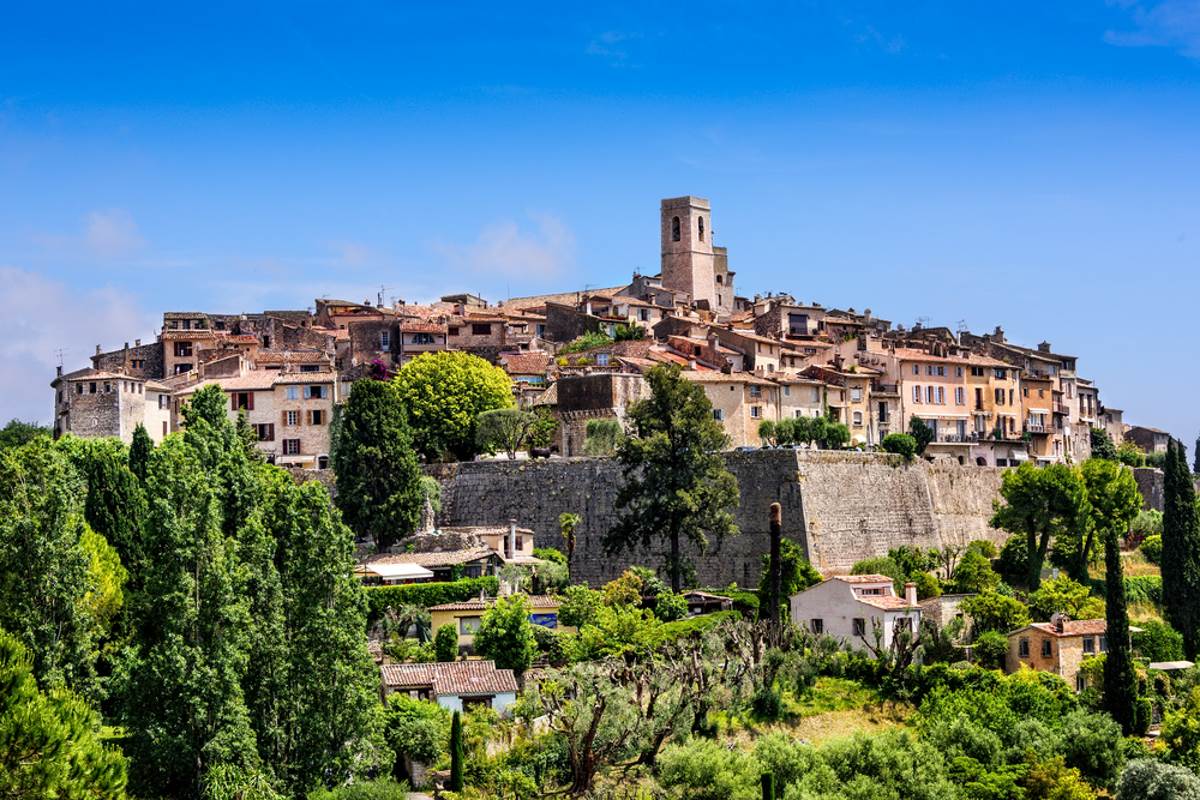
If you’re looking for a holiday away from the city of Nice, but still want to be close by, the Nice hinterland is the place for you. Away from the hustle and bustle of the city, between the mountains and the sea, discover breathtaking landscapes and villages of character built in medieval times.
You’re sure to fall in love with the charming little steep streets. Many artists have settled in the hinterland of Nice: painters, sculptors and ceramists, following in the footsteps of great painters such as Braque, Modigliani and Matisse, who were already inspired by the landscapes of the Nice hinterland in their day.
Grasse and its world-famous perfumes, the Mercantour National Park, the Pignes steam train, miles of signposted footpaths, medieval towns… The Côte d’Azur is not just about beaches and sunshine, it has so much more to offer. To help you plan your itinerary, here’s a short guide to the must-see places in the hinterland of Nice.
What are the most beautiful villages in the hinterland of Nice?
There’s no shortage of beautiful villages in the hinterland of Nice, but you have to make a choice, so here’s a selection of villages not to be missed if you’re passing through the region:
1 – Vence
What should you know about Vence?
Fortified by ramparts, Vence boasts a rich historical heritage. First a Roman town, then a bishopric, the ramparts were built in the Middle Ages. You can still admire the Signadour Gate and the 13th-century Levis Gate. The cobbled streets, the vaulted passageways that provide welcome coolness in the hottest summer months, the famous fountain in the Place du Peyra, the Place Godeau and its Gothic house, and the ash tree that is said to have been planted by King FrançoisI himself in 1538 are all points of interest not to be missed when you are in Vence.
And don’t forget that the historic town of Vence was a veritable source of inspiration for painters such as Matisse, Chagall, Dubuffet and Carzou, as well as writers such as D.H. Laurence (Lady Chatterley’s Lover)… Many artists are still here today, so don’t hesitate to push open the door of their galleries. Art exhibitions, literary events, plays and music concerts complete the village’s artistic offering.
Every Friday morning, a market of craftsmen and designers showcase their skills in the Place Clémenceau. There is also a book market on Wednesday mornings, a food market on Friday mornings, an organic market on Saturday mornings…
What to see in Vence
The Nativité-de-Notre-Dame Cathedral
Built in the 11th century, the cathedral is the smallest in France, but its architecture and furnishings leave no one indifferent: a Gallo-Roman sarcophagus from the 5th century, carved Carolingian plaques, rare polychrome wooden statues, choir stalls, a baptistery decorated with a mosaic by Marc Chagall (1979) depicting Moses saved from the waters… These are just some of the reasons to visit.
The Château de Villeneuve
Built in the 17th century next to the 12th-century watchtower, it was once the residence of the Counts of Provence and Lords of Vence. It now houses themed exhibitions.
Chapel of the Dominican Rosary
At the request of Sister Jacques-Marie, who had treated him between 1942 and 1943, Matisse undertook to renovate this chapel in its entirety: the stained glass windows, the architecture and the mural decoration. He began work in 1946 and finished in 1951.
The Chapel of the White Penitents
Its polychrome-tiled dome is particularly original, and you’ll also find temporary exhibitions here.
The Sainte-Elisabeth Chapel
This Romanesque chapel, built towards the end of the 13th century, is one of the oldest rural chapels in the region. Its magnificent frescoes date from the 15th century.
Also worth a visit in Vence: the Neolithic burial site at Baou-des-Blancs and major prehistoric and ancient remains.
2 – Grasse
What should you know about Grasse?
The town of Grasse has been famous for its perfumes since the 17th century, and has become the world’s perfume capital. Fragonard, Galimard and Molinard are the 3 best-known houses in Grasse.
Tip: guided tours of these perfume factories are free! Discover the different stages in the manufacture of a perfume.
What to visit in Grasse
Provencal Museum of Costume and Jewellery
A large collection of Provençal clothing and jewellery typical of the region, housed in a beautiful town house that was once the home of the Marquise de Cabris.
Museum of Art and History of Provence
This museum has a huge collection devoted to daily life in Provence since prehistoric times, as well as fine and decorative arts from the 17th century to the 1st half of the 20th century.
Musée Amiral de Grasse or Musée de la Marine
This museum displays engravings and 30 model ships. Admiral de Grasse, who won the naval battle of the Chesapeake on 5 September 1781, put an end to the American War of Independence.
International Perfumery Museum
This museum, the only one of its kind in the world, takes you on a journey of discovery into the history of perfume and the different aspects of the trade: raw materials, manufacture, industry, innovation, trade, design… used by the manufacturers and luxury houses of the perfume industry.
Grasse Cathedral
A superb 13th-century cathedral in the Alpine Romanesque style, the Chapel of the Blessed Sacrament dates from 1738, and the pillars inside still bear the scars of the fire started when the revolutionaries turned the cathedral into a granary. The paintings are true masterpieces.
- The chapel of Saint-Thomas in Provençal Baroque style, the 18th/19th century chapel of the Saint-Michel penitents and the rural chapels.
- The jasmine festival in August and the rose exhibition in May are also well worth making a note of in your diary.
3 – Saint-Paul-de-Vence
What should you know about Saint-Paul-de-Vence?
This village stands on 2 rocky spurs surrounded by fortifications built at the request of King French 1st. The village’s luminosity, history, architecture and landscapes have inspired many artists. Step back in time as you wander through the narrow streets of Saint-Paul-de-Vence from the Porte Royale to the Porte Sud, making a detour via the Rue Grande to admire the stone facades dating from the 16th and 18th centuries. Flower-filled gardens, small squares, period fountains, elegant porches, not to mention craft workshops, galleries, museums and Provençal stalls – there’s so much to discover in this village where, from the ramparts, you have an unrivalled view of the surrounding hills.
What can you visit in Saint-Paul-de-Vence?
The Collegiate Church and its treasures
Built between the fourteenth and eighteenth centuries, this church has many different architectural styles. Initially Romanesque, the chapel of Saint-Clément, built in 1680, is Baroque in style and contains relics from the catacombs of Rome. Finally, the art of the Counter-Reformation has been added, with a rich décor of stucco and fresco paintings.
Maeght Foundation
On display are paintings, sculptures, drawings and ceramics.
Museum of local history
Explore local history through wax figures made by the Musée Grévin and photos of famous people who have visited the village.
4 – Tourrettes-sur-Loup
What should you know about Tourrettes-sur-Loup?
This medieval village, atop a rocky spur, is set amid lush vegetation made up of aloes and prickly pears that grow naturally. It is also known for its production of a very special flower: the violet. In fact, it has been nicknamed the City of Violets since the cultivation of this flower became one of the town’s main activities last century. Strolling through the old, golden stone streets, admiring the facades and vaulted passageways, and discovering the artists’ galleries and craftsmen’s stalls, is a truly delightful experience.
What can you visit in Tourrettes-sur-Loup?
- A flower parade and flower battles are organised every year in March (violet festival).
- The church of Saint-Grégoire: built in the 12th century, it has a Romano-Renaissance entrance and remarkable furnishings including paintings, sculptures and altars.
- Local produce festival.
5 – Gourdon
What should you know about Gourdon?
To reach the village of Gourdon, you have to pass through the Gorges du Loup, and the Saut du Loup waterfall is well worth a short stop before reaching the village. You will also appreciate the surrounding vegetation: orange trees, olive trees and perfume plants in the hamlet of Le Loup before arriving in Gourdon. This village, perched on the side of the cliffs at a height of 700 m, is a veritable eagle’s nest. It’s enough to make you dizzy, but the view is breathtaking. If you’re feeling more sporty, you can take the Chemin du Paradis, which has an elevation gain of over 500 metres to reach Gourdon that’s not for the faint-hearted! There, you’ll discover medieval white stone houses, a panoramic view over Nice, the feudal castle…
What to see in Gourdon
Gourdon Castle
Built in the 12th century by the Counts of Provence to better control their borders, Gourdon is a veritable fortress. Destroyed during the Wars of Religion, it was rebuilt in the 16th century under Henry IV with its current asymmetrical trapezoid architecture. Round and square towers, loopholes and a Renaissance entrance door, gargoyles, a well, vaulted rooms and a 14th-century chimney are all still there. Also worth seeing: the main terrace with its hundred-year-old lime trees, the garden designed by Le Nôtre, and the temporary exhibitions.
Other places to visit in Gourdon
- The chapel of St Pons
- The remains of a Roman camp with double enclosure and oppidum.
- The prehistoric caves of Garagaï, route de Grasse.
- A fortified rock shelter in the fortress cliff.
6 – Seillans
What should you know about Seillans?
This medieval village has a rich historical and architectural heritage, with a feudal castle, a 12th-century church, cobbled streets and numerous fountains in squares shaded by century-old plane trees.
What to see in Seillans
- The Place du Thouron and its magnificent fountain.
- The Rayol viaduct built by the Eiffel factories.
- The George wash-house, built in 1864 of ashlar, is the only vestige of the village of Boves.
Where to walk around Nice?
1 – Mercantour National Park
The park covers almost 1,801 km2, linking 28 communes. Its aim is to preserve a rich biodiversity with over 2,000 species of plants, 78 species of mammals including the wolf and 199 species of birds. The aim of the park is to protect and enhance the natural environment, and to make tourists aware of the need to protect the site so that human activity and the environment are not incompatible. The park must preserve its characteristic beauty, which you’ll be delighted to enjoy during your stay.
2 – Daluis gorges
How about a trip to the French Colorado? The Daluis gorges have the distinctive red colour of pelite, a rock formed in the Permian period (between 299 and 251 million years BC) over a length of almost 1 km.
3 – Train des Pignes
Take a trip back in time on the Train des Pignes, a small train with a steam locomotive dating back to 1923. Many events are organised during the summer season: chestnut festival, trip around the Puget-Théniers olive, musical trip, steam training course, etc.
4 – Caves of Saint-Cézaire
Immerse yourself 40 metres underground on a 200-metre trail at a temperature of 15°C: immense stalactites, starry concretions, luminous jellyfish with a sound show on musical stalactites. There’s also an accrobranche and a 5-hectare wooded park, and a restaurant serving local produce for lunch only.
Where to sleep and eat in the hinterland of Nice?
The hinterland of Nice offers a wide choice of accommodation, from hotels to bed & breakfasts, and here are just a few examples:
Vence
Le mas de Vence
This hotel-restaurant in the village of Vence has an outdoor swimming pool and air-conditioned rooms, standard or comfort double rooms from €109.
La mas du Rescator
Rent a double room or a fully-equipped family studio, swimming pool, terrace, garden. From €90 for a room and €112 for a studio.
Hôtel des Cayrons
In the village of Vence, this hotel offers double, quadruple and studio rooms, an outdoor swimming pool and parking with a charging point for electric vehicles. From €113 per night.
Grasse
La Bellaudiere
This 16th-century house boasts, in addition to its charm, double rooms with loaned beds for children, a bar and snack bar, and breathtaking views of the valley or the sea from the terrace and rooms. All the charm of the past with modern comforts from €103 per night.
Flat in the historic centre
A fully-equipped studio apartment for 4 people in the centre of Grasse, with private parking and sea views, from €139 per night for 2 people.
Les lodges de l’oliveraie
Self-contained studios for 2 people, air-conditioned, with balcony, swimming pool, garden and sea or mountain views. From €91 per night.
Saint-Paul-de-Vence
Le Mas des Amandiers
This homestay offers double rooms and fully-equipped studios for 2 and 4 people, with terrace and outdoor swimming pool, peaceful garden and view of the village. From €103 for a double room.
Hotel Restaurant La Vague de Saint Paul & Spa
This hotel offers 40 m2 double rooms and suites with double bed and sofa bed, a restaurant, bar, outdoor swimming pool and wellness centre with hammam, sauna and whirlpool. From €136 per night for a double room.
Tourrettes-sur-Loup
Le Mas de la huppe
25 m2 studio set in a quiet olive grove, close to the village, fully equipped for 2 people, with bike hire, from €85 per night.
Auberge De Tourrettes
In the heart of the village, this inn with restaurant offers double rooms with extra bed, outdoor swimming pool, bar, private parking and a lovely view. From €148 per night.
La Roulotte de Florette
These 25 m2 gypsy caravans offer family rooms for 4 people with a fully equipped kitchen, a sitting area, 1 shower room and a sunny terrace. This guest house has a garden and children’s playground, a hot tub and a river nearby. From €134 per night.
Gourdon
Les Gîtes de Gourdon
4 large gîtes for 4 to 10 people, sea views, garden and shared swimming pool.
Seillans
Hôtel des 2 rocs
A typically Provençal bastide with refined comfort, restaurant, terrace and car park in the heart of the village. Double room from €75 to €195 per night.
In conclusion
Discover the heights of the Côte d’Azur, its medieval villages, the Provençal way of life, the traditions and local produce of the Nice hinterland. These escapades are sure to dazzle you with their panoramic views and rich, well-preserved heritage. A delight for the eyes and the taste buds!
200 audioguided tours for cities all around the world
Download